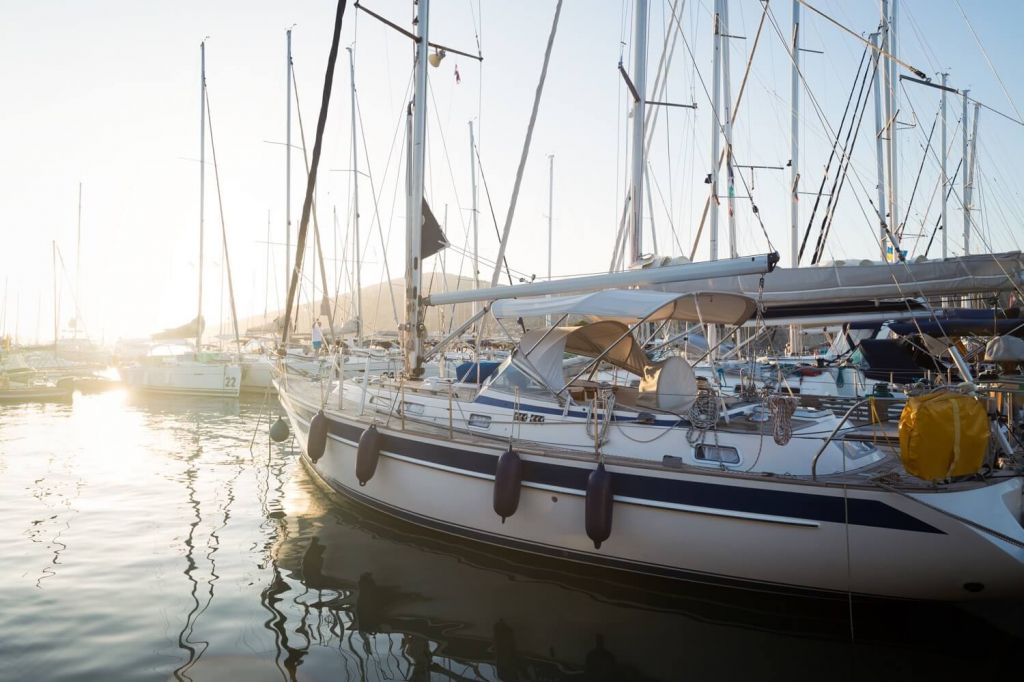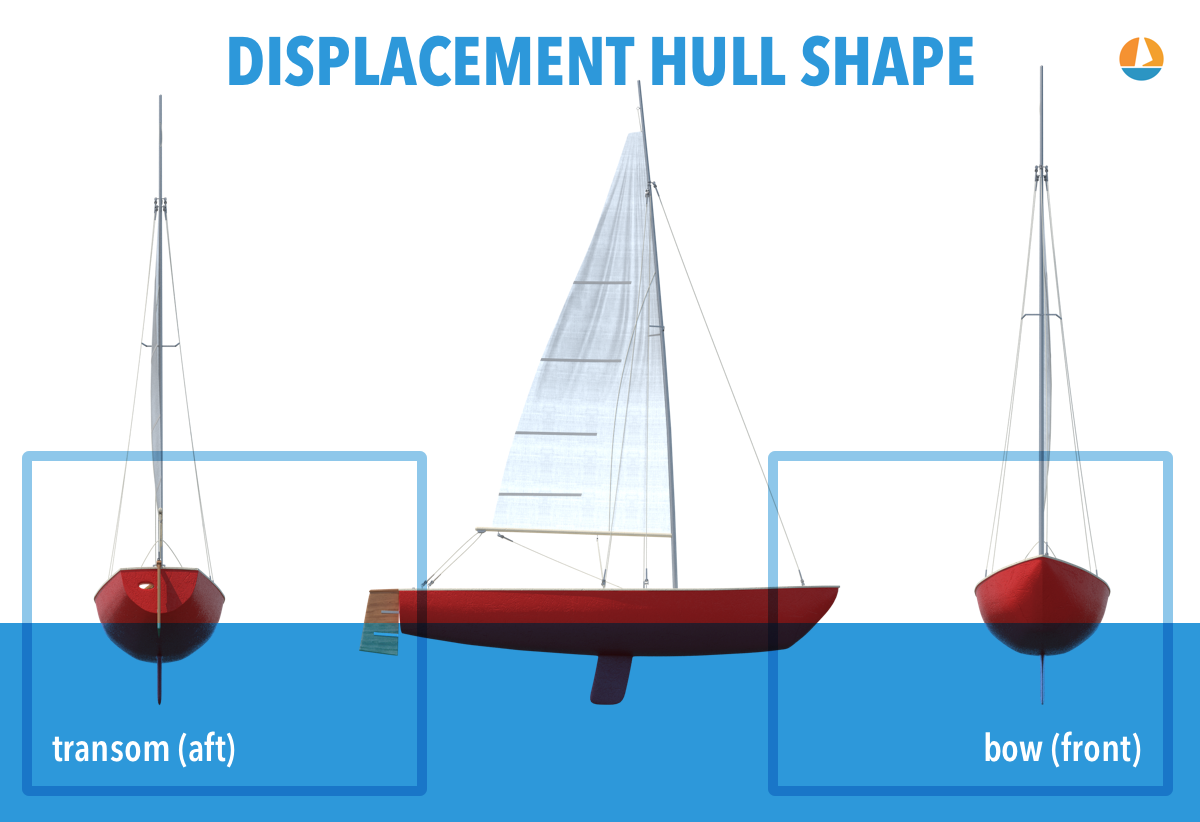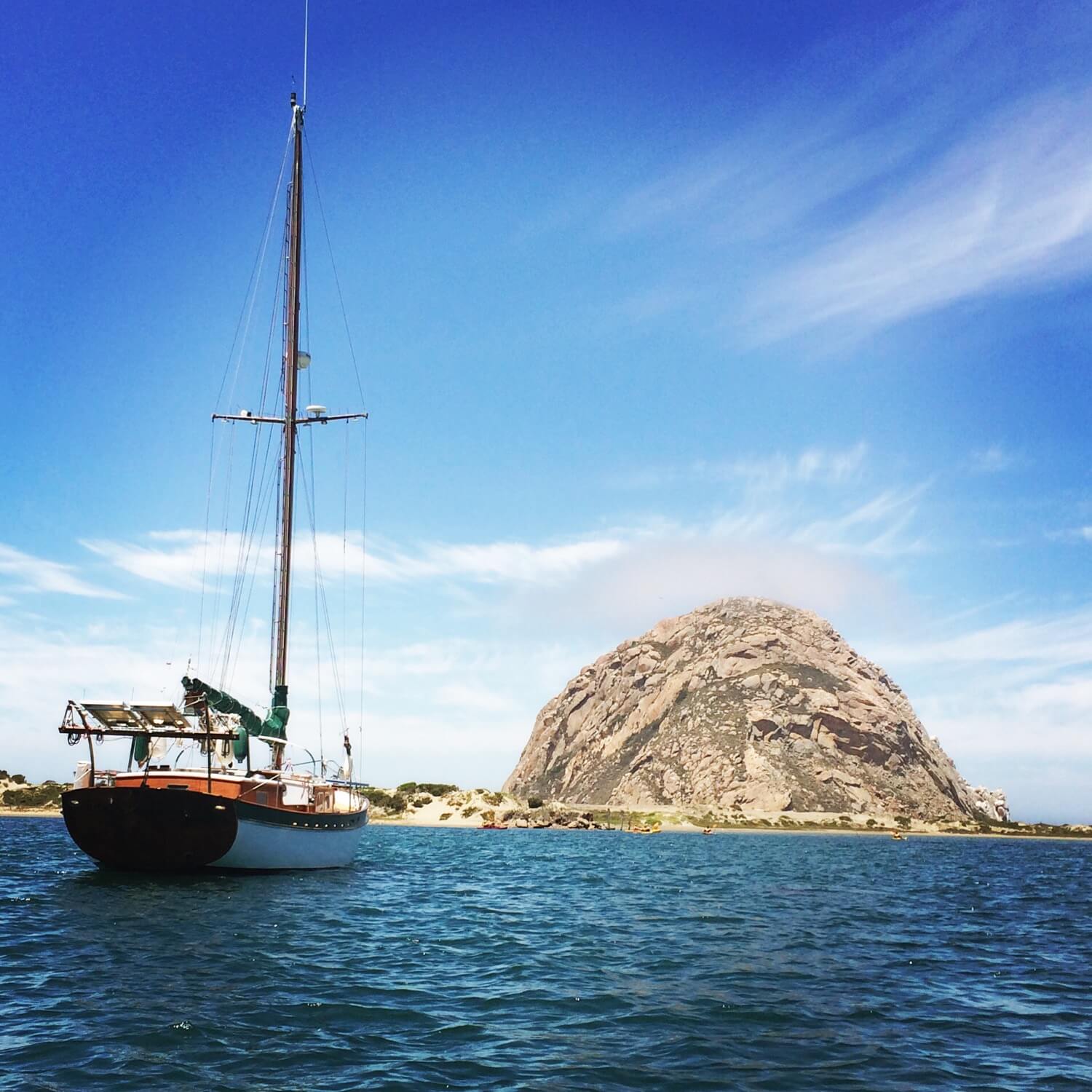A Complete Guide to Displacement Hulls (Illustrated)
The displacement hull is the classic go-to hull design for sailboats and one of the most recognizable ones out there. In this guide, I explain all there is to know about them.
What's a displacement hull? A displacement hull is a boat hull design that uses buoyancy to support its weight. It lies partially submerged and displaces water when moving, hence its name. The amount of water it displaces is equal to its weight. It's very stable in rough waters. That's why this design is widely used on cruisers and sailboats.
Displacement hulls are great and reliable. Below we'll talk all about that. But they all have one major setback. Read on to find out what.

On this page:
Displacement Hull Features
Nearly all sailboats have displacement hulls. Displacement hulls are great for operating in rough waters. They are less affected by waves than planing hulls. Because they're so steady, they are to go-to design for many ocean-going boats. Examples of boats with displacement hulls are: sailboats, canoes, and fishing boats and trawlers.
The displacement hull is:
- the most reliable & efficient hull in rough water
- the most fuel-efficient hull
- the most buoyant hull
- the hull with the largest cargo capacity
I'll explain all these points later on, but first, I want to just describe the hull design for you.
Design Features

Hull Shape
Displacement hulls are pretty bulky. They have round bilges. The bilge is where the boat's bottom curve meets its vertical sides. The hull itself is round. It's round because that creates less resistance when moving through the water. That roundness is what makes it such a comfortable ride, even in waves.
But that roundness also makes it easy to roll (think of canoes, for example). That's not a good feature in heavy weather. To offset it, sailboats have a heavy keel that runs deep into the water. This counterbalances any roll, making the boat very stable. Sailboats with a long keel are very difficult to capsize.
The hull is rounded throughout, running from bow (front) to aft (back).
Weight
The displacement hull is generally pretty heavy. That's okay, since it is supported by its buoyancy, so it doesn't need a lot of power to propel (more on this later). The weight actually helps it be more stable and unbothered by nature's pull. I think it's fair to call the displacement hull with the whale among boats. It uses the water's upforce to carry it, and gently peddles along.
How Fast Is It?
Since this hull needs to move a lot of water before going anywhere, displacement hulls are pretty slow. Actually, it very well may be the slowest hull type out there. On average, their cruising speed lies anywhere between 6 - 8 knots. They can go faster, but most boats with displacement hulls don't have the power to do so.
They are great at low speeds. Thanks to their shape, they are easy to move and don't require a lot of power. They're actually one of the most fuel-efficient designs out there.
Compared to other hull types:
- Displacement Hull - Partially submerged, buoyant, moves water
- Planing Hull - Glides over water surfaces, generates lift |
- Semi-Displacement Hull - Displaces at low speed, lifts partially at cruising speed
I've written an Illustrated Guide to Boat Hull Types, where I go over 11 different examples of the most common boat hulls. That article will give a great and quick overview to get you up to speed, so if you don't know anything about boat hulls yet, that article is a great place to start.
How a Displacement Hull Actually Works
The shape of the hull creates a sort of air bubble that floats on top of the water. At the same time, the weight of the boat pushes down (or actually, gravity pulls it down). This submerges the boat a bit, anchoring it, in a way. This push-pull gives it its characteristic reliability, making it more stable and better at keeping course.

Why It's So Fuel-Efficient
As with anything that is really good at floating, it doesn't require a lot of energy to propel it. Since it can use the water to carry it, it's great for carrying cargo. You can really load her up without drastically increasing fuel consumption.
A planing hull needs to get up to speed before it generates lift, and until it does, it's absolutely rubbish in terms of a smooth ride. That's why planing hulls can get so uncomfortable in waves. They can't get up to speed, and their hull isn't made for displacing - rather flying - so it becomes a terrible ride.
Setback: Maximum Hull Speed
The one major setback for displacement hulls is the upper-speed limit. As I've noted before, they are pretty slow. But the thing is: they can't go beyond their upper-speed limit, even if you gear her up with massive outboard engines and so on. The reason for this is called the maximum hull speed.
To understand the maximum hull speed and how it works, I want you to think of yourself lying in the Mediterranean Sea. That's just arbitrary, but since I can pick any sea I like in these kinds of visualizations, I prefer the Mediterranean. So you're lying in the Meds and along comes a sailboat. The sailboat hauls a rope behind it (I know, a line). You grab on to the rope and hold tight. The sailboat gently drags you along. It accelerates. The pull increases, you have to grab on even tighter. It accelerates even more. You have to really clench now.
The reason you have to increase your grip when the sailboat accelerates is simple. Your body displaces water when you move. When the speed increases, it has to displace the same amount of water, but faster. The water resistance (drag) increases.
The power needed to displace water increases exponentially with speed.
So now you can probably imagine that there will be a point where you can no longer hold on and have to let go. You have to slow down. That's your maximum hull speed working.
In the same way, there's a point where the boat's drag becomes so large, that it becomes almost impossible to propel it, no matter the amount of power. That speed is called the maximum hull speed. Every displacement hull has one, and it is a direct correlation with the boat's length. If you want to check out the maximum hull speeds for different boat lengths and learn how to easily calculate it yourself, you can check out a previous article. In it, I go over average sailboat speeds and the formula for calculating maximum hull speed.
By the way, the reason planing hulls can go faster, is that they generate lift at a certain speed. In terms of our story just now, that's the same as if you got yourself a wakeboard. Then, when the boat accelerates, at one point you pull yourself out of the water, and glide over the surface, instead of lying in it.
Advantages & Disadvantages of Displacement Hulls
As with anything, this design has both pros and cons. I'll go over each one briefly down below.
Advantages
- handle well in rough waters
- very hard to sink
- smooth ride
- large cargo capacity
- requires little power: very efficient
- very dependable
- can be very heavy
- large range
Disadvantages
- has a maximum hull speed
- tends to roll
- can capsize if it has no keel
- if it does have a keel, it has a deep draft
Who Might Like This Type of Hull?
If you don't care about speed and are all about range, safety or comfort, the displacement hull is the way to go. It's by far the most comfortable ride of all hull types and will get you anywhere. You can cross oceans, cruise inland - it doesn't really matter. It has the largest range of all the hull types, and the fuel-economy is really impressive. With cruising speeds averaging between 6 - 8 knots, this hull type is the slowest, but also the steadiest. The perfect boat for long-range cruisers and liveaboards.
In Conclusion
Displacement hulls have been around for centuries, and they are the most well-known hull for a reason. They're reliable and efficient. Those are perhaps the two most important trades when you're at sea. Nearly all sailboats have displacement hulls, and for cruising, the benefits outweigh the drawbacks big time. If you like speed, however, you should consider getting something with a planing hull or semi-displacement hull. You can learn everything about semi-displacement hulls here.
Did you find the answer to your specific question?
👍 35 👎 7

Comments
Jacques Burgalat
Great tutorial ! Do you know of anyone (or company) who could help me with using a fully electric power train on a 19m/40 ton Tjalk?
I (and the tjalk) are currently on the Saint Johns River (Florida) which is more akin to a lake or canal than an actual “river”, so fighting waves and currents is not an issue.
Thank you for your help.
Jacques
Leave a comment